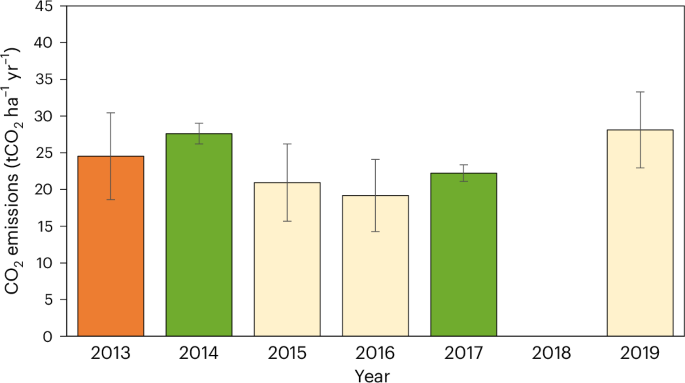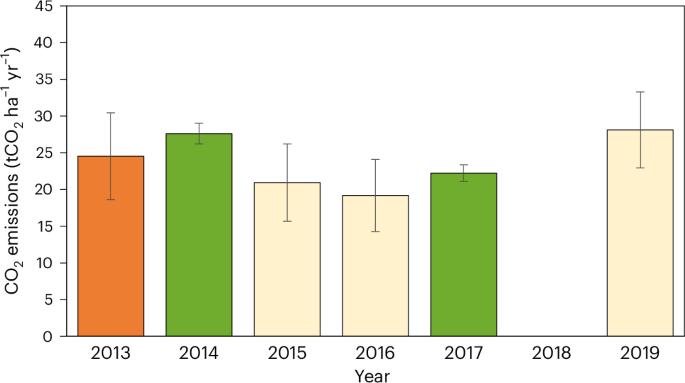Biomethane produced from maize grown on peat emits more CO2 than natural gas
IF 27.1
1区 地球科学
Q1 ENVIRONMENTAL SCIENCES
引用次数: 0
Abstract
Cultivation of maize for biomethane production has expanded rapidly, including on drained peat soils. The resulting soil CO2 emissions at the point of feedstock production are largely overlooked when assessing biogas climate mitigation potential. On the basis of field-scale flux measurements, we calculate that soil CO2 emissions from biomethane feedstock production on drained peat exceed embodied emissions for an equivalent amount of natural gas by up to a factor of three. Biogas is promoted as an alternative fuel with the potential to lower net CO2 emissions. However, here the authors calculate that growing biogas feedstock crops on drained peatlands may produce three times more CO2 than burning natural gas.


用泥炭上种植的玉米生产的生物甲烷比天然气排放更多的二氧化碳
用于生产生物甲烷的玉米种植面积迅速扩大,包括在排水泥炭土上。在评估沼气气候减缓潜力时,原料生产过程中产生的土壤二氧化碳排放量在很大程度上被忽视了。根据实地尺度的通量测量,我们计算出,在排水泥炭上生产生物甲烷原料所产生的土壤二氧化碳排放量比等量天然气的体现排放量最多高出三倍。
本文章由计算机程序翻译,如有差异,请以英文原文为准。
求助全文
约1分钟内获得全文
求助全文
来源期刊

Nature Climate Change
ENVIRONMENTAL SCIENCES-METEOROLOGY & ATMOSPHERIC SCIENCES
CiteScore
40.30
自引率
1.60%
发文量
267
审稿时长
4-8 weeks
期刊介绍:
Nature Climate Change is dedicated to addressing the scientific challenge of understanding Earth's changing climate and its societal implications. As a monthly journal, it publishes significant and cutting-edge research on the nature, causes, and impacts of global climate change, as well as its implications for the economy, policy, and the world at large.
The journal publishes original research spanning the natural and social sciences, synthesizing interdisciplinary research to provide a comprehensive understanding of climate change. It upholds the high standards set by all Nature-branded journals, ensuring top-tier original research through a fair and rigorous review process, broad readership access, high standards of copy editing and production, rapid publication, and independence from academic societies and other vested interests.
Nature Climate Change serves as a platform for discussion among experts, publishing opinion, analysis, and review articles. It also features Research Highlights to highlight important developments in the field and original reporting from renowned science journalists in the form of feature articles.
Topics covered in the journal include adaptation, atmospheric science, ecology, economics, energy, impacts and vulnerability, mitigation, oceanography, policy, sociology, and sustainability, among others.
 求助内容:
求助内容: 应助结果提醒方式:
应助结果提醒方式:


